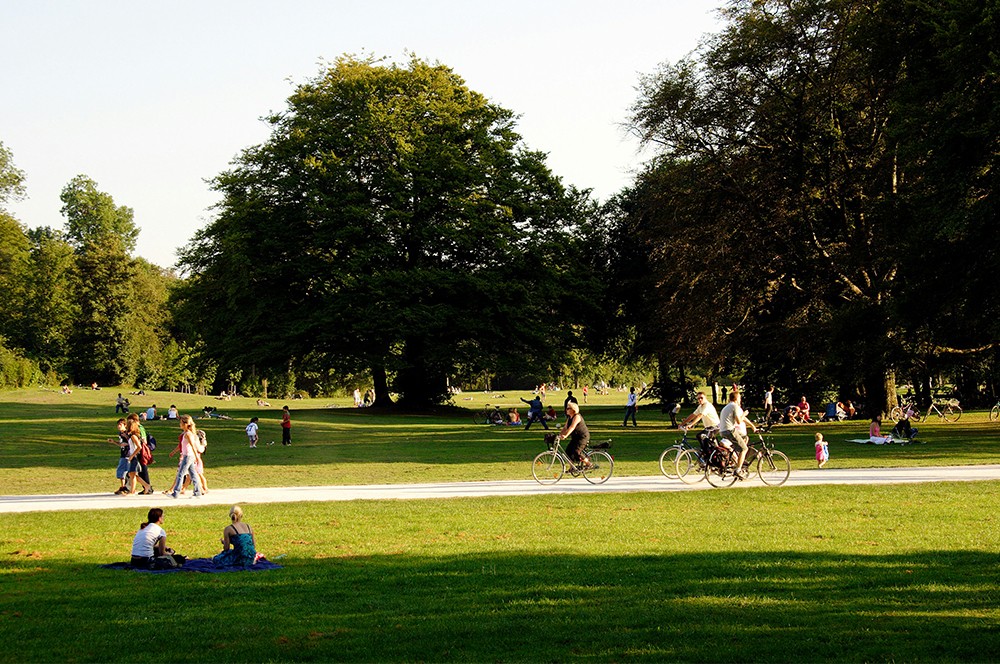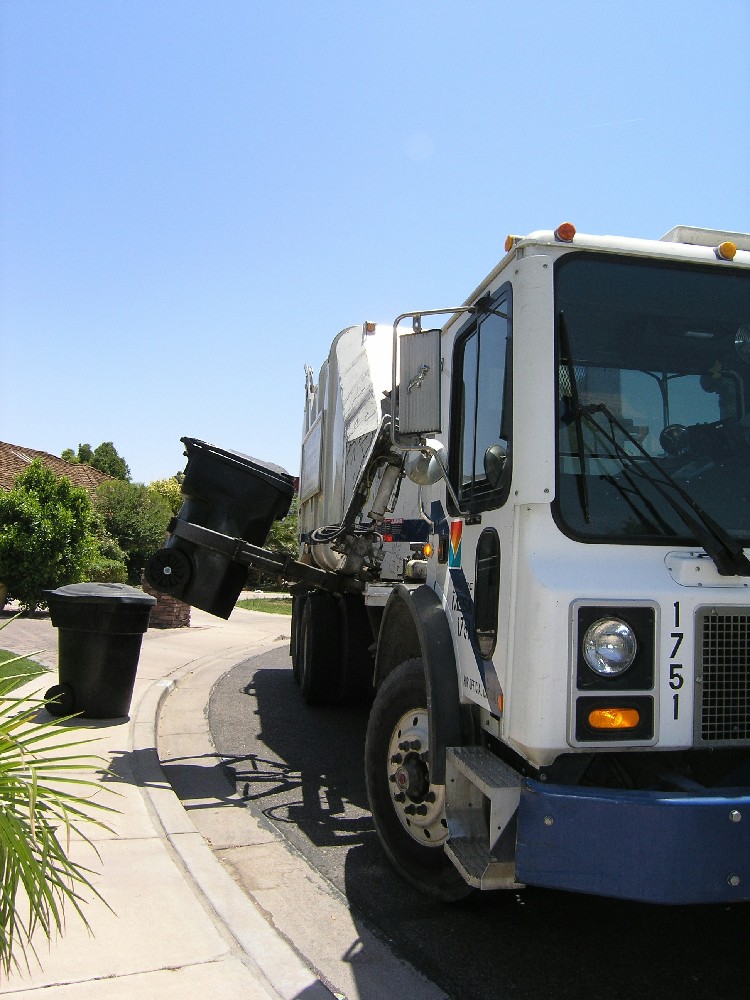Thoughtfully placing commercial trash receptacles and recycling bins is crucial to prevent littering in public spaces. With intentional planning guided by usage patterns, maintenance capabilities, and design innovations, communities can overhaul litter-strewn parks into pristine public spaces.
Factors to Consider for Placement of Trash Cans in Public Spaces
When developing a trash can placement strategy, planners must consider a range of interplaying factors, from pedestrian flows to noise control:
High-Traffic Areas
Studying park visitor numbers, movement patterns, and public schedules pinpoints ideal locations for commercial trash receptacles in the most frequented zones. Litter accumulates more quickly wherever people congregate, like sports fields, picnic grounds, playgrounds, and parking lots. Locating trash receptacles and recycling bins in these high-traffic areas accommodates needs.
Carefully tracking visitor density metrics per site area over years of operation provides hard data to inform evolving placement schemes annually. Conduct engagement surveys and observe how waste overflow correlates to high usage dates like major holidays or event rentals.

Accessibility
Commercial trash cans should be readily visible, easily accessible, and within a convenient distance, regardless of site layout. For large open parks, a distribution allowing users to spot collection bins easily from anywhere leads to litter reduction. In complex environments with varying levels, footpaths, and obstructions, closer proximity targeted along routes is key.
Audit park grounds from multiple user perspectives like families with strollers, elderly visitors, children, athletes, etc. Flag visibility obstacles like dense bushes, structures blocking sight lines in play areas, or topography changes hiding trash bins around bends. For each issue, brainstorm relocations or supplementary stations to fill gaps.

Activity Zones
Certain areas attract specific types of litter based on typical activities. Sporting spaces call for increased plastic bottle and food wrapping capacity while playgrounds accumulate snack bags and juice boxes. Customizing outdoor trash cans by activity zone using labeled openings for recyclables enhances the ease of proper disposal.
Analyze recycling volume and composition of the trash collected per zone over high-usage seasons. Use this data to right-size bins in relation to one another based on observed output levels. Extrapolate future volume patterns per area when planning additional park trash receptacles.
Noise Control
For commercial trash receptacles located near residential buildings along park perimeters, some communities enforce strict noise limits for pickup times to minimize early morning disruptions. Choosing models equipped with rubber bottoms or plastic instead of steel trash receptacles can dampen sound, as can strict pickup scheduling.
Decibel readers, during controlled sound checks, identify the loudest operational functions of various models of trash bins, like lids slamming or trucks lifting. Compare readings amongst shortlisted options to select the quietest waste disposal management systems compatible with local ordinances.

Style Cohesion
Consistency in trash receptacle color schemes, materials, sizes, and styling creates an aesthetic cohesion that is visually appealing. Starting with a unified vision for the look and placement scheme before purchasing park trash cans streamlines processes and leaves room for planned growth. Get further insights with our overview of commercial trash can types.
Develop master planning guidelines outlining standard colors, build materials, fonts, and signage templates for all community waste stations. This branding consistency visually ties diverse locations together under an overarching area-wide approach to cleanliness as a civic value.

Maintenance Limitations
Carefully assessing labor bandwidth, budget, and waste disposal logistics prevents promising more upkeep than is feasible long term. If utilizing solar compaction units with sensor alerts, staffing must support rapid response when commercial garbage bins reach capacity.
Project operational requirements for proposed stations like service frequency, water access for washing, associated repair costs, and monthly collections budget. Leverage station sensors to monitor actual utilization numbers and right-size units or collections to align with budgets.
Zoning Codes and Permitting
Local zoning, noise regulations, residential buffer zones, historic preservation criteria, and land use agreements guide placement suitability for commercial trash cans. Seek guidance from municipal zoning offices early in design phases to prevent unforeseen barriers once tactical plans solidify.
Procurement Policies
Municipal purchasing protocols and vendor selection processes also determine allowable models, sizes, colors, features, and pricing tiers of commercial trash bins. Understanding procurement ground rules before identifying receptacle options prevents wasted efforts if preferred waste disposal solutions face non-starter obstacles later.
Designing Effective Trash Can Placement Strategies

When drafting area-wide waste management plans, these strategic mapping tips provide impactful guidance:
Multi-Level Approaches
In dense municipalities, a tiered methodology with primary trash bins along main byways supplemented by secondary micro-collection bins at minor cross routes enhances access. Standard commercial trash cans stationed at larger parks can suffice while complementing park benches along neighborhood trails to prevent littering.
Conduct usage studies to set metrics-driven thresholds distinguishing when substantial stations are justified versus smaller satellite supports based on visitor volumes and the amount of trash collected. Codify graduated benchmarks into long-term planning guidelines.
Clustering
The proximity effect shows grouped commercial trash cans result in more litter reduction than sporadic individual trash bins. Clustering containers in welcoming battery formations with recycling sorting at congregating sites discourages “miss” tosses and illegitimate dumping.
Within overall waste management strategies, calculate high-efficiency grouping sizes by park type from neighborhood playgrounds to vast athletic complexes. Determine ideal cluster densities as a factor of user volume, enclosure square footage, station capacity, and observed usage patterns.
Overlapping Zones
Creating interlocking cross-coverage between adjacent trash receptacle placement zones lets a person in one area conveniently discard items before moving to the next activity hub. Overlapping cross-functional areas by 5-10% beyond single-purpose divisions expands practical reach.
Map heatmaps of visitor clicks and traditional walking paths using geospatial app data and surveys. Search for gaps indicated by reported littering incidents or maintenance tickets outside current station ranges. Expand crossover zones incrementally to determine optimal coverage.
Room for Growth
When drafting long-term schemes, earmark locations for seasonal pilot expansions or permanent scaling as funds, pedestrian volumes, and maintenance bandwidth grow. Satellite stands during concerts and events or doubling playground capacity for community festivals accommodate surges in trash and recycling volume.
Design modular scaling plans allowing bases and trash receptacles to be readily swapped, added, removed, or enlarged using common attachment points. Create reserved vacant “growth pads” per standard blueprint specs to simplify installing supplemental units using preset wiring and conduits.
Signage Visibility
Effective signage like bright colors and clear sorting instructions is vital — visually appealing commercial trash cans and recycling receptacles encourage proper disposal. Prominent labeling reminds visitors what goes where, while creative designs turn recycling into a game, promoting sustainable practices with trash cans. Site maps displaying the exact locations of collection bins also facilitate usage.
A/B test signage label themes like descriptive text vs. iconic graphics or playful imagery vs. formal illustrations to determine the most effective communication style by park demographic. Localize instructions based on community lingo and simplify language for global visitors.
Trash Can Placement Challenges and Solutions

Despite meticulous planning, public waste disposal stations come with common challenges from spills to misuse — but solutions do exist:
Spill Containment
Loose bags, flapping lids, overflow incidents, and animals scavenging openly invite messes that deter would-be receptacle users. Specially designed spill-proof rims block content exposure while stabilized bag holders prevent annoying movement for cleaner stations.
Monitor complaints and maintenance logs to quantify mess incidents by station model, age, and location variables. Compare product specs like sealed casings or adjustable vents to identify durable, resilient designs that keep trash cans covered. Phase out outdated units for upgraded alternatives.
Misuse and Contamination
When commercial trash receptacles lack internal dividers, trash tossed into one compartment quickly devolves into an unsorted eyesore violating recycling program protocols. Multi-stream receptacles with labeled sorting slots per material curb mistaken contamination. Clear signage also clarifies proper disposal.
Station cameras that sample usage occasions can indicate whether misuse traces to inadvertent confusion or intentional contamination, calling for tailored countermeasures like enhanced labeling versus stricter enforcement. Routine community recycling programs and education also boost engagement.
Dumping Violations
Remote unmanned stations tend to draw illegal residential and commercial dumping that violates town codes. Security approaches like timed locks, clearly posted fines, waist-height openings, and nearby lighting discourage violator misuse after hours.
Review station inspection logs for violation patterns in terms of materials, times, access conditions, and traceable origins. Customize deterrent strategies accordingly through entry design choices, surveillance plans, routine police drive-bys, or area access restrictions.
Insufficient Capacity
Overflowing containers spur impromptu piles nearby. Flexible scaling via wheeled compacting units with quick-change inner liners dynamically boosts capacity as crowds balloon and recede.
Choose the right-size park trash receptacles using historic peak usage data per venue areas and events. Seek stations allowing incremental bag, liner size, or bank adjustments. Plan overflow protocols like temporary portable stands or backup collection routes when surges strain systems.
Advances in Trash Can Designs
![]()
The form and function of modern commercial trash cans continue advancing through surprising innovations:
Smart Sensors
Commercial trash cans equipped with ultrasonic fill-level detectors alert attendants before overflow issues occur via web and mobile notifications. IoT-enabled sensors also transmit station statuses like battery health, sunlight exposure, humidity, and compaction effectiveness.
Review fill alerts weekly to identify high-demand zones needing capacity increases or heavier service schedules. Similarly, employ battery and solar efficiency reports to rotate and maintain off-grid station power sources predictively.
Solar Power
Off-grid solar-powered compacting stations operate fully self-contained without electrical connections. Onboard solar panels recharge batteries continuously, energizing compression plates, occupancy sensors, and safety lights overnight. This sustainably liberates placement from proximity to outlets.
Calculate total solar power needs using sun exposure variables at proposed locations then specify panel and battery capacities exceeding projections. Determine ideal panel angles and directional orientation for seasonal shade fluctuations throughout the year.
Creative Customization
From trendy graffiti art to subtle historical motifs, customized decoration transforms basic park trash cans and recycling receptacles into iconic attractions. Schools embed logo mascots while stadiums flaunt team colors. Site-specific landscape visuals remind visitors of the local impact of disposed litter.
Engage community artists and student contests to conceptualize unique designs that symbolize area character and foster civic pride. Feature these creative showcases at visitor's centers, recreation centers, tourism areas, or during high-profile occasions like anniversary celebrations.
Vertical Configurations
Floorprint-conscious venues are adopting vertically oriented waste management towers featuring multiple specialized chutes for common discards like plastic bottles, cans, paper, and compost. These condensed footprints with expansive capacity suit space-constrained layouts.
Calculate potential footprint savings using vertical stations for space-limited sites like streetside walkways or post-security airport queues lacking square footage for bulky groupings. Right-size unit heights, slot widths, and chamber depths based on most frequently disposed materials.
About Furniture Leisure
Furniture Leisure has led the commercial outdoor furniture industry since 2003. For over 20 years, we have supplied thousands of customers nationwide with durable, quality furnishings built to withstand intensive public use.
We offer a huge selection of commercial-grade products like picnic tables, grills, benches, bike racks, park trash cans, bleachers, and more. Our outdoor amenities include hotels, parks, apartments, campgrounds, offices, and many other public spaces across the country.
At Furniture Leisure, our experienced team works closely with clients to recommend customized furnishing packages tailored to your space and needs. We deliver beautiful, functional outdoor projects within budget.
Contact us today to find the perfect commercial trash cans. Our experts guarantee outstanding service and complete satisfaction.
Frequently Asked Questions
What Are the Best Practices For Trash Can Placement To Maximize Usage?
Strategically place public collection bins and recycling receptacles in high-traffic zones wherever people congregate like park activity hubs, trail intersections, and building entryways. Cluster commercial garbage cans in easily accessible battery formations instead of random dispersal to concentrate dispensed litter neatly. Prominently labeled sortation openings should reflect area usage patterns, like plastic bottles and cups near ballgame seating or paper near administrative offices.
How Far Apart Should Park Trash Cans Be Installed Along Paths?
At a minimum, space public park collections every 200-300 feet along recreation trails and key pedestrian routes through larger parks to always keep the next bin visible. In high-density urban areas like shopping districts, spacing collection bins every 40-75 feet ensures convenient access for proper litter discarding before pedestrians move out of range.
What Should Be Considered When Planning Commercial Garbage Stations For Events?
When estimating trash and recycling volume for large public events like concerts and festivals, allow for one unit per every 250-400 attendees, depending on waste volume projections for the genre. Anywhere alcohol is served merits additional collection bins.


















































































































Leave your comment